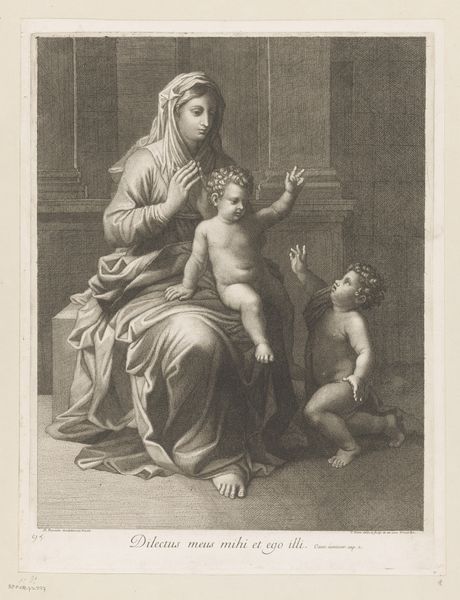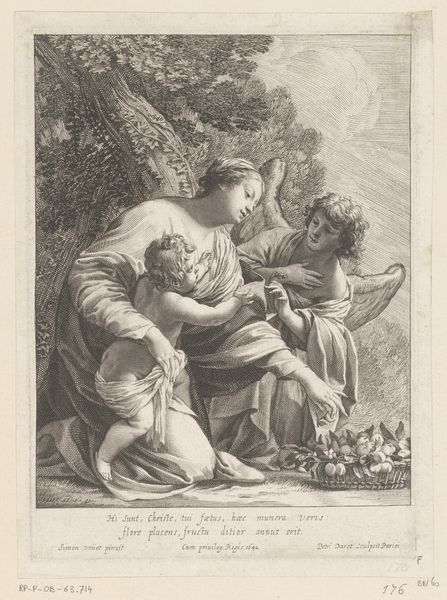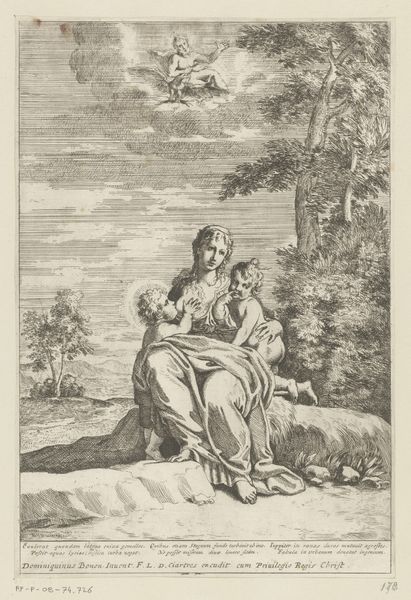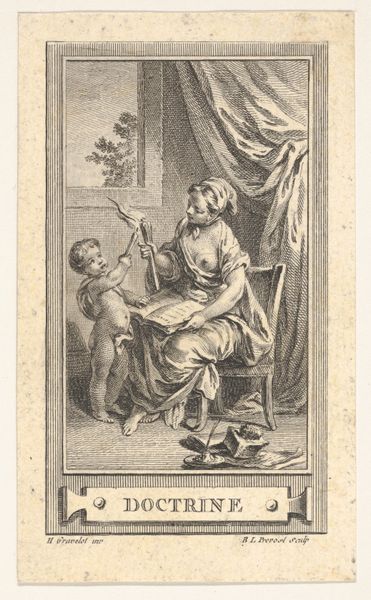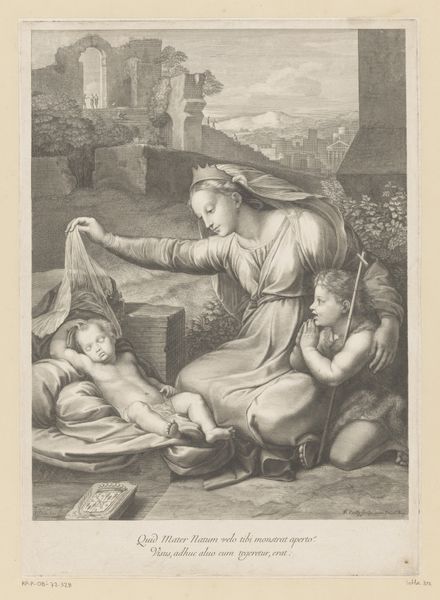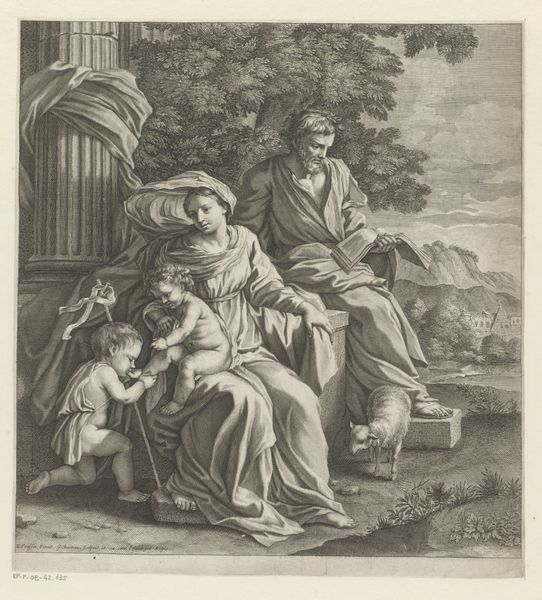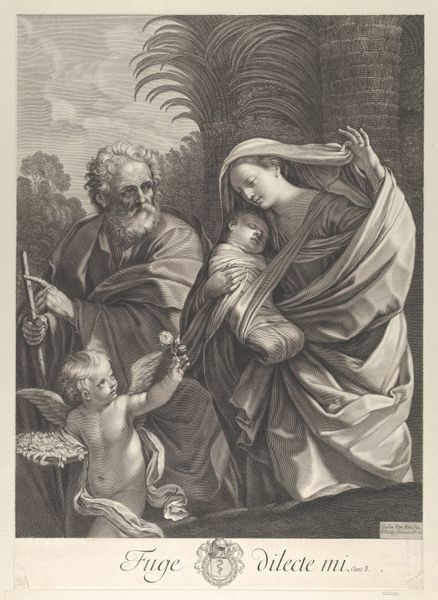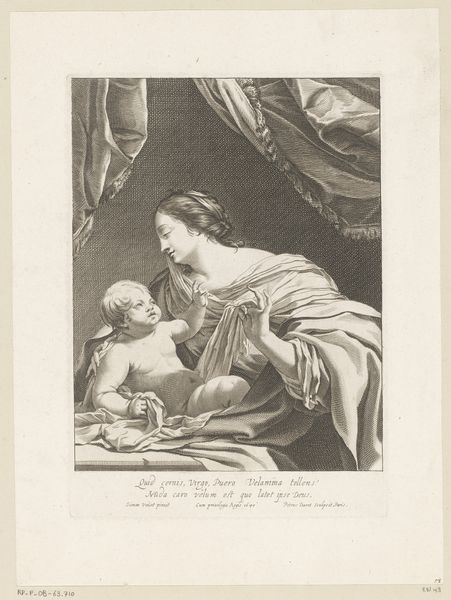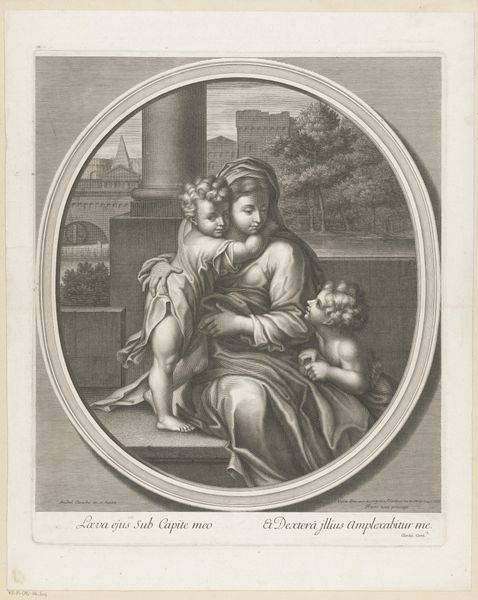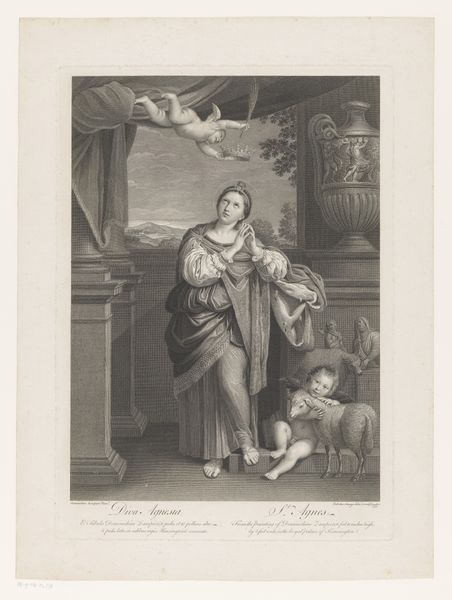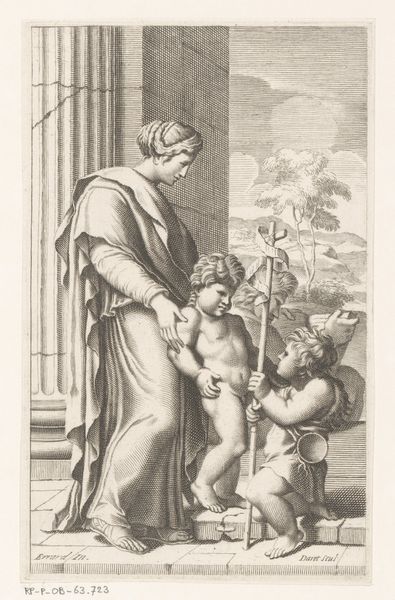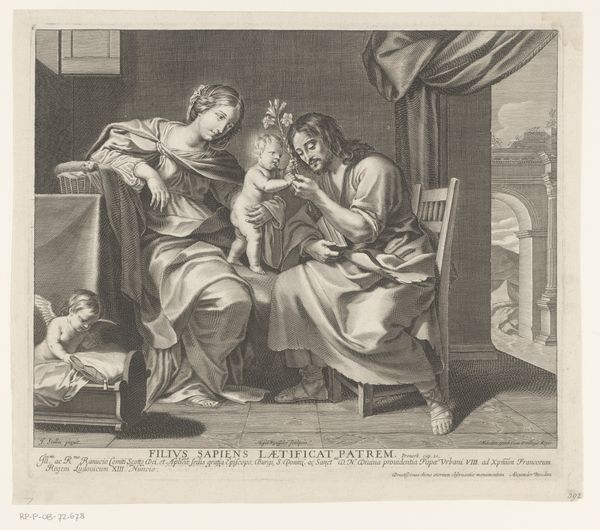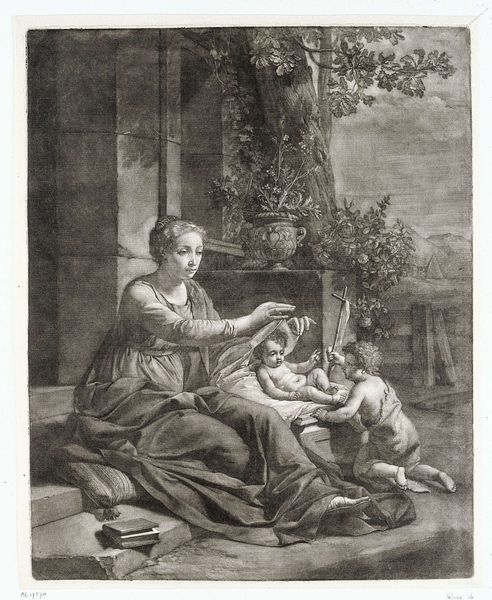
Maria met kind en Johannes de Doper die een kruis aanreikt 1654 - 1656
0:00
0:00
engraving
#
portrait
#
baroque
#
figuration
#
engraving
Dimensions: height 292 mm, width 212 mm
Copyright: Rijks Museum: Open Domain
Editor: This engraving, "Maria met kind en Johannes de Doper die een kruis aanreikt," was created between 1654 and 1656 by Gilles Rousselet, and is currently held at the Rijksmuseum. The scene feels incredibly staged, almost theatrical. The meticulous lines and the weight of the draped fabric are especially captivating. How do you approach an artwork like this? Curator: Focusing on Rousselet's process and the materials offers fascinating insights. Consider that this engraving would have involved considerable labor, the physicality of etching the image into a metal plate, the inks, the paper itself. These choices situate the work in its socio-economic context: who had access to these materials, who was commissioning these works, and for what purpose? It transforms how we read a devotional piece. Editor: That’s a very interesting shift of focus, thinking about the access and labour. It’s so easy to just consider the image itself. The transition from the plate to mass reproducibility changed consumption? Curator: Absolutely. This image wasn't created in a vacuum. Engravings such as these enabled wider dissemination of religious iconography. Think about the rise of a consuming public, not only for an aristocratic elite, but even among those that weren't patrons of "high art," or the professional engravers and their workshops. Editor: So it is much more than just devotion? Curator: Precisely. It also speaks volumes about the economics of faith and the burgeoning art market of the era, of the systems of craft, labour, and material exchange underlying Baroque culture. Even the act of viewing is implicated in networks of production and consumption. Editor: I hadn't really considered that the image could exist outside the original religious context. It sounds as if it allowed new audiences. It shifts my view of Baroque art, from courtly art to a more distributed item. Curator: Exactly. By looking at the tangible aspects, it takes it beyond its surface. It adds many layers of meaning. Editor: I have never thought of art like that before, it's like another dimension that provides meaning, I never thought of the cultural influences in how it was manufactured. Thank you!
Comments
No comments
Be the first to comment and join the conversation on the ultimate creative platform.
